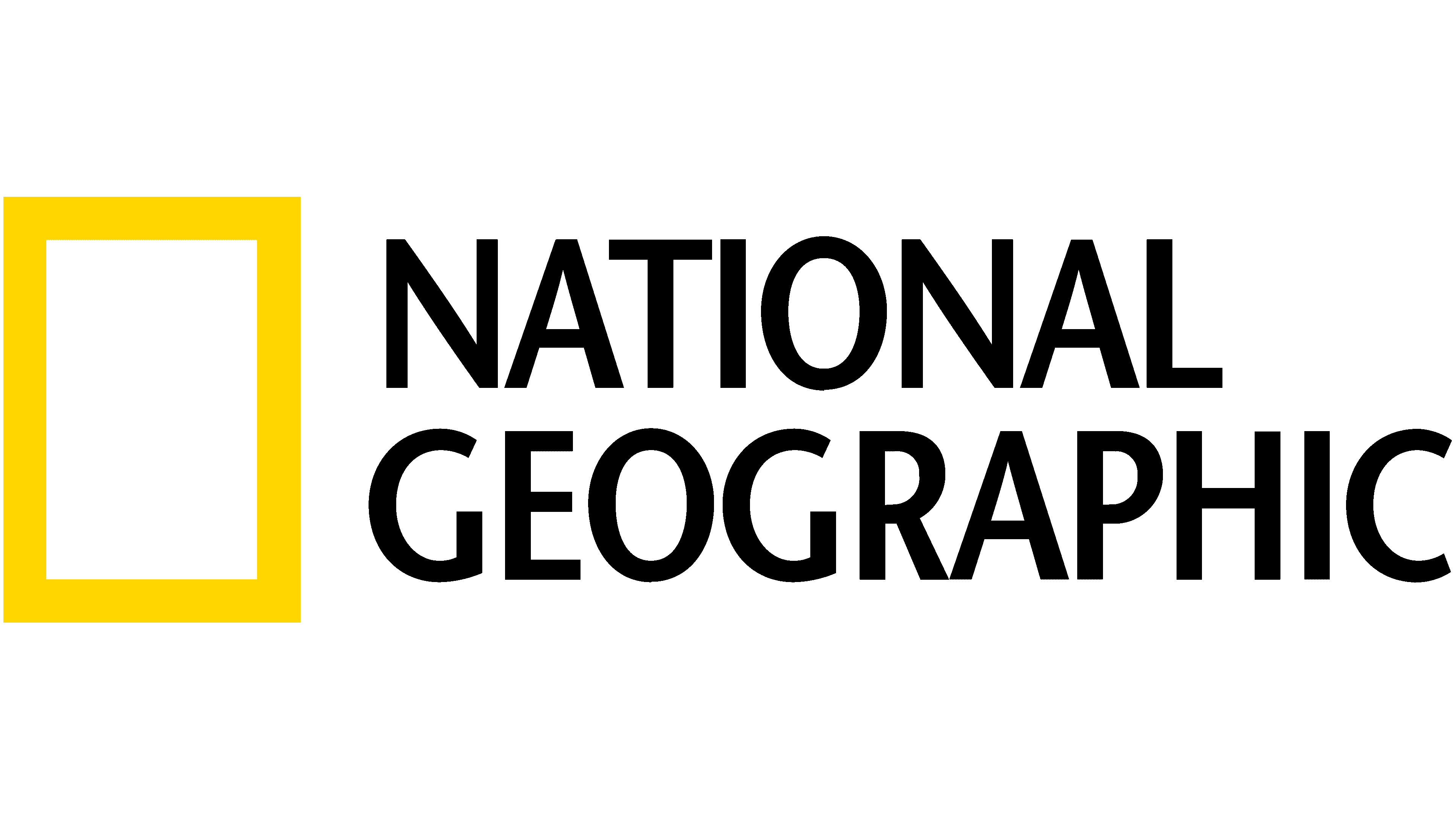National Geographic Logo
National Geographic, founded in 1888, has evolved into a global multimedia entity. Renowned for its iconic yellow-bordered magazine, it delves into geography, archaeology, natural science, and world cultures. Today, it extends its reach through TV channels, digital platforms, and other media, captivating audiences worldwide. Key markets encompass North America, Europe, and Asia. In 2015, a partnership formed between the National Geographic Society and 21st Century Fox, leading to the establishment of National Geographic Partners. Now, The Walt Disney Company, after acquiring 21st Century Fox, holds the majority stake, fortifying its commitment to exploration, conservation, and storytelling.
Meaning and history
Founded by a group of eminent scholars and explorers, its aim was to disseminate knowledge of geography and the world’s diverse cultures.
For over a century, the National Geographic Society remained independent, funding numerous explorations, scientific research projects, and educating the public through its renowned publications and documentaries. The magazine became synonymous with breathtaking photography, pioneering journalism, and deep dives into nature, science, and human civilization.
As the media landscape shifted with the advent of television, National Geographic adapted by launching its own channels, showcasing documentaries with the same depth and quality as its print counterpart.
In 2015, a pivotal change occurred. The National Geographic Society entered into an expansive partnership with 21st Century Fox, resulting in the formation of National Geographic Partners. This venture combined the Society’s media assets with Fox’s vast network capabilities. While the Society retained a 27% stake, Fox held the majority at 73%, significantly increasing National Geographic’s reach and potential. This move aimed to ensure the brand’s sustainability and growth, while also amplifying its mission of exploration, education, and environmental conservation.
However, the story didn’t end there. In 2019, another major shift transpired. The Walt Disney Company finalized its acquisition of a majority of 21st Century Fox’s assets, including its stake in National Geographic Partners. This transition brought National Geographic into Disney’s diverse portfolio of media and entertainment brands.
Under Disney’s umbrella, National Geographic continues to be a beacon for exploration, science, and storytelling. The commitment to illuminating the wonders of our planet and its inhabitants remains undiminished, ensuring that this iconic brand thrives in the contemporary media landscape and retains its unique legacy of bridging worlds and cultures.
1998 – 2001
The inaugural emblem comprises two elements: a textual component and a symbolic icon positioned to the text’s left. This design mirrors the form of a stretched rectangle, reminiscent of a typical magazine or even a windowpane. Such a depiction stems from the creators’ intent to emphasize the society’s role as a ‘portal to global wonders.’ The emblem’s yellow bands are broad, with their vertical span roughly matching the neighboring inscription, “National Geographic Channel.” The textual content spans across three lines, presented in a classic serif font, embodying the legacy and depth of the organization’s insights into the world’s wonders.
2001 – 2005
In this specific timeframe, transformations were evident in the naming style. While the upper and central segments of “National Geographic” retained their original design, the lower portion, “Channel,” underwent a noticeable alteration. A separation line was introduced, and its typographic presentation was modified. Consequently, the “Channel” discarded its serif attributes and was reduced to half of its previous dimensions, highlighting a distinct shift in design emphasis and underscoring the evolution of the brand’s visual identity during this phase.
2005 – 2016
The leadership greenlit an updated emblem featuring a refreshed sans serif typeface. The creative team opted to eliminate the separating boundary between the elements, reinstated the term “Channel” to its initial proportions, and accentuated it using a subtle shade of gray. This redesign reflected the evolving brand strategy and underscored a harmonious blend of modernity and legacy, signaling a new chapter in the organization’s visual journey. The alterations, while seemingly subtle, played a pivotal role in enhancing brand recognition and emphasizing its adaptability in a dynamic market landscape.
2016 – Today
Given that National Geographic spans a digital and satellite broadcasting platform, a society bearing its namesake, a publication division, a celebrated magazine, and an array of travel handbooks, the higher-ups saw the need for cohesive branding. With a refreshed emblem, they aimed to seamlessly represent all these entities under one umbrella. To achieve this consolidated brand identity and broaden its scope beyond broadcasting, the creators strategically opted to omit the descriptor “Channel”, ensuring a more universal appeal. This move was instrumental in streamlining the brand’s image, making it more adaptable across its diverse ventures and media touchpoints.















